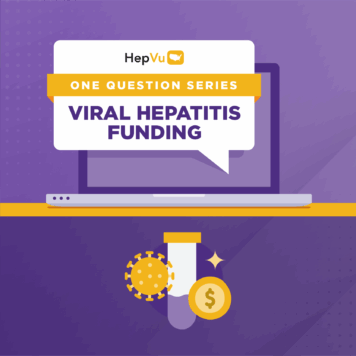Jorge R Mera, MD, FACP, is the Director of Infectious Diseases for Cherokee Nation Health Services. He is Director of the HIV Clinic and the Program Director of Indian Health Services-funded Ending the HIV Epidemic initiative for the Cherokee Nation. He has been dedicated to organizing the Cherokee Nation HCV elimination program as well as the HIV/HCV Extended Care Health Outcomes (ECHO) project in the tribe.
Q: You have dedicated your career to working to improve health outcomes for American Indian and Alaska Native communities. Your recent work has focused on HCV and HIV elimination specifically. What led you to work with these particular communities and with these particular infectious diseases?
I am originally from Argentina and a foreign medical graduate. After completing my internal medicine and infectious disease training in the US, I had to go to a medically underserved area to obtain my permanent residency from the US immigration service. While completing this task in Nogales, Arizona, I received a call from Dr. Seth Yandell, an internist I had met during residency. Dr. Yandell, who works for Cherokee Nation Health Services, asked me to consider a position to develop an infectious disease department in the Cherokee Nation Health Services. The role involved providing general infectious disease consults but focusing on treating patients with Hepatitis C and HIV. I saw this as an exciting opportunity to continue practicing my passion for infectious diseases while serving a population in need. I believed I could have a greater impact by working with a minority population lacking infectious disease specialists, compared to continuing my career in an urban setting where such specialists were already available.
Q: HHS’ Office of Infectious Disease and HIV/AIDS Policy (OIDP) recently awarded a $450,000 grant to the Cherokee Nation to work towards eliminating Hepatitis C. What kind of an impact does a grant like this have on existing program capabilities? What other programs have supported this work?
I am immensely grateful for the funding provided by the Office of Infectious Diseases and the HIV/AIDS Policy Office through this grant. This grant has proven invaluable for our efforts towards eliminating HCV in several ways. Firstly, it equips us with the necessary resources to reach out to members of the community who may be afflicted with HCV. Up until now, our HCV elimination program has primarily focused on diagnosing, evaluating, and treating individuals who access our medical services. While we have made significant strides in this regard, we recognize that to fully accomplish our goals, we must extend our reach to vulnerable populations who, for various reasons, do not access our healthcare system despite being eligible for such services. With the support of this grant, we are actively engaging with individuals attending harm reduction programs, homeless shelters and recovery programs. Secondly, the grant enables us to screen for HCV not only among Native Americans but also among non-Native Americans at the aforementioned sites. This inclusive approach is crucial for HCV elimination, as communities residing in reservations consist of both Native and non-Native Americans, and HCV knows no ethnic or racial boundaries.
Lastly, the program facilitates not only HCV screening but also screening for HIV and syphilis. These infections are integral components of the substance use disorder/HIV/HCV/STI syndemic prevalent in the United States, affecting not only the general population but also disproportionately impacting Native American communities. By addressing these interconnected health challenges comprehensively, we aim to make significant strides towards improving the health outcomes of all individuals, regardless of their background or circumstances.
Q: This grant is part of a strategy to fund so-called “microeliminations” that encourage the creation of programs tailored to address Hepatitis C in a specific demographic group, community, or risk group. Can you speak to the philosophy behind this strategy and how it applies to the Cherokee Nation’s elimination efforts?
In the absence of a national HCV elimination program, micro-elimination programs play a crucial role in tackling the HCV epidemic within specific, often delimited areas that may be defined by geography, demographics, or the characteristics of the population and healthcare systems. This targeted approach allows for the maximization and customization of available resources to effectively address the problem at hand. In our context, our micro-elimination program initially focused on eliminating HCV among individuals accessing the Cherokee Nation health services. While significant progress has been made, there remains work to be done, particularly in reaching those who are not currently utilizing the healthcare system. With the support of this grant, we have been able to extend our efforts to engage with these underserved individuals.
While an ideal scenario would involve a national HCV elimination program, until such a national program becomes a reality, micro-elimination programs stand as our best option in effectively combating the spread of HCV within specific communities and populations.
Q: In your work with the Cherokee Nation Health Services, you work on both HCV and HIV elimination efforts. What are the main differences you notice in your work between the efforts to eliminate HCV and HIV?
This is indeed a complex question, and the answer isn’t straightforward. While there are several differences, in my view, the primary distinction lies in the level of stigma surrounding HCV compared to HIV. Over the past four decades, the LGBTQ community has effectively raised awareness about the importance of addressing HIV, prompting a response from the federal government. A notable example is the Ryan White program, a federally funded initiative providing free medication and services to individuals living with HIV, along with prevention services for those at high risk.
In contrast, there isn’t a comparable program for Hepatitis C in the United States, despite its increasing incidence and higher mortality rates compared to HIV. Individuals with HCV often lack the same level of social and medical support as those with HIV. This is precisely why I take pride in working for the Cherokee Nation, which endeavors to bridge this gap and supports the Hepatitis C elimination program.
Q: National Native HIV/AIDS Awareness Day (March 20) is an opportunity to raise awareness about the disproportionate impact of HIV on American Indians and Alaska Natives. What would be your message to these communities on this day?
My message to the community emphasizes the dual nature of HIV as both a sexually transmitted disease and a blood-borne virus, while also highlighting its potential for elimination. However, achieving this ambitious goal hinges on widespread awareness of one’s HIV status, making it imperative for everyone to undergo testing to ascertain whether they are HIV positive or negative. For individuals at high risk of acquiring HIV, such as those engaging in unprotected sex with multiple partners, unaware of their partner’s HIV status, or involved in injection drug use with shared needles and paraphernalia, there are various interventions available to mitigate transmission risks. These interventions encompass practicing protected sex, modifying risky behaviors, and accessing antiviral medications like HIV PrEP, all of which can be acquired through primary care providers. In addition, for those individuals with a substance use disorder who are injecting drugs, accessing a syringe service program can be crucial.
It’s essential to underscore that Native Americans, especially females, exhibit the highest rates of HIV acquired through injection drug use compared to other ethnic groups, as reported by the CDC. Therefore, for individuals involved in injection drug use, it’s vital to recognize the availability of numerous services designed to support recovery from substance use disorders. These services not only aid in the journey to recovery but also prioritize safety by preventing HIV, Hepatitis C, and other infections during this process.
Additionally, for those who are HIV positive, it’s crucial to highlight the existence of highly effective treatments. When taken as prescribed, these treatments enable individuals to lead normal lives and significantly reduce the risk of transmitting the virus to others.



